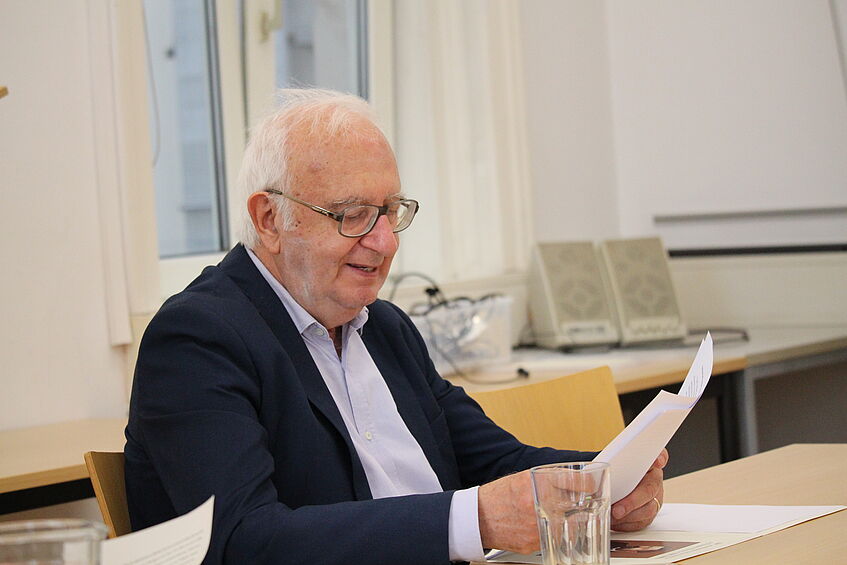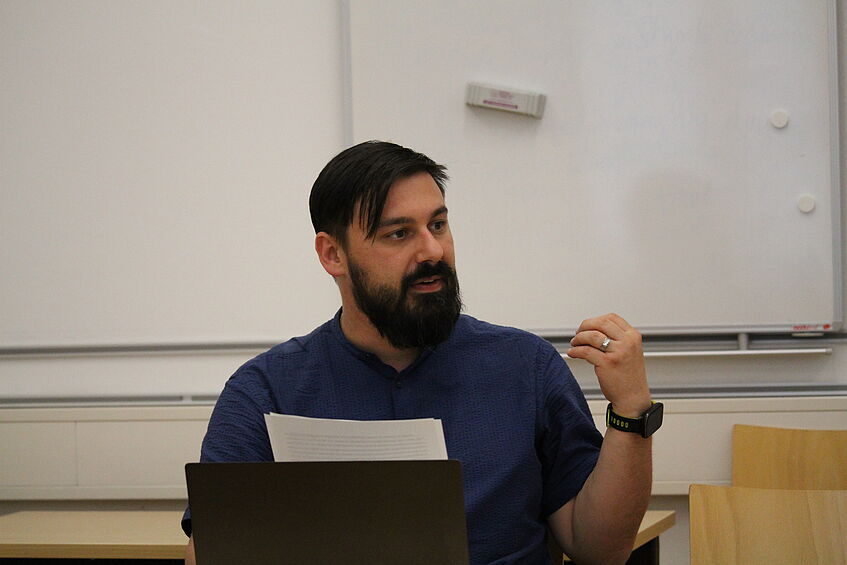Ontologia dell’immagine (Ontology of image)

Claudio Ciancio

Mattia Coser
On Tuesday, June 4 2019, a lecture by the italian philosopher Claudio Ciancio, entitled „Ontologia dell’immagine: immagine della realtà e realtà dell’immagine“ („Ontology of the image: image of reality and reality of image“) took place in course of the Research Seminary for Graduands „Neue Narrative des Heiligen und des Humanum“ („New Narratives of the Holy and the Human“).
Ciancio is a student of one oft he most famous and important italian philosopher’s of the 20th century, Luigi Pareyson, and spent a great part of his work with further developping Pareysons philosophy. His scientific work roots in Italy and in Germany, where he is member of the Schelling-committee of the Bavarian Academy of Sciences and Humanities in Munich. Currently, he is professor for theoretical philosophy at „Università del Piemonte Orientale“ and president oft he „Centro studi filosofico-religiosi Luigi Pareyson“ in Turin.
In his lecture, Ciancio tried to develop a hermeneutical philosophy in the sense of his teachers in order to focus on the ontologcial status of the image. Hermeneutics, following Ciancio, show a particular paradoxy of the image, which is the paradoxal concordance of identity and difference, being and not-being. The image is interpretation of reality. As such, it is on one hand autonomous, differing from this reality, on the other hand, it’s reality is nothing but the reality of what it depicts. The image is not simply a copy of reality, but manifestation and expression of reality and therefore, an ontological augmention. Nevertheless, reality remains inexhaustable and open for new images and interpretations. It would be a mistake to believe that an image could be a total objectification of reality.
The challenge for a philosophy of image is to accentuate this paradoxical dimension of images. In that course, art – every kind of art, from poetry to cinematography – is a privileged addressee for philosophy, for art functions as the authentic room for meaningful and disclosing images.
Review by Mattia Coser
